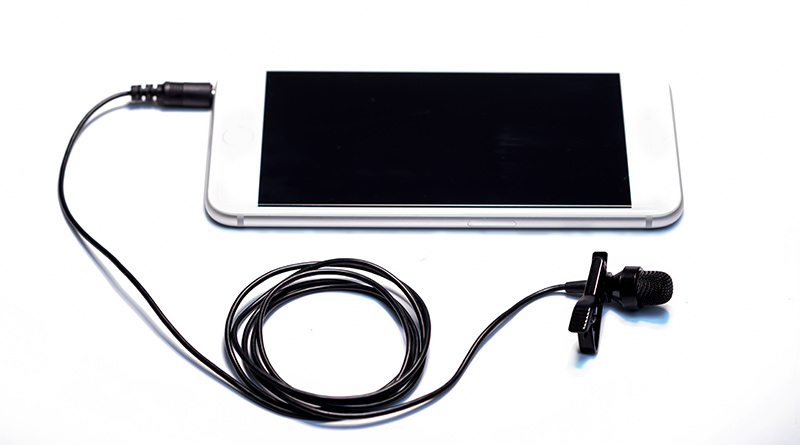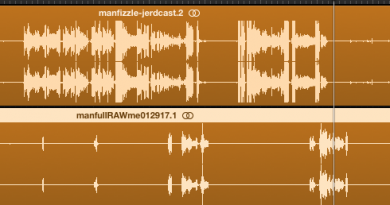Here’s a guide on the more common types of microphones, based on usage and price points for mobile devices

When it comes to buying microphones, especially to work with mobile devices, there are a lot of options depending on what you want to do and how much money you have to spend. The options vary primarily based on type, quality, and price and can pose purchasing challenges for even veteran teachers.
Another consideration, of course, is personal preference, but this list is made of well-known and high-quality brands. Some will swear by certain brands but the quality differences between similarly priced options may not be markedly noticeable to most. For example, a number of top professional mobile journalists consistently opt for Shure products but they are considerably more expensive.
By far the biggest issue with using mobile devices is making sure the appropriate connectors or adapters are available. Mobile devices require a TRRS (Tip Ring Ring Sleeve) connection as opposed to the traditional TRS connection. To know which is which, take a look at the plug and you will see two plastic dividers for a TRS connection and three for a TRRS. The extra ring is what allows the mobile device to record.
Since Android devices and iPads still have TRRS headphone jacks, as opposed to the typical TRS connectors found on most DSLR and mirrorless cameras, there are even more options than with the iPhone which requires the lightning adapter. Anything with a lightning connector usually involves a slight jump in cost too.
The biggest issue you face with using mobile devices is making sure that you have the appropriate connectors for what you need. Since Android devices and iPads have TRRS headphone jacks, as opposed to the typical TRS connectors found on most DSLR and mirrorless cameras, many options will connect directly. Anyone wanting to use an iPhone will need some kind of lightning adapter.
Anything that includes a lightning connection or requires an adapter comes with a slight jump in cost too.
If you already have XLR microphones or know you may want to upgrade to similar higher quality, more durable gear in the future, you can also purchase proper adaptors for to connect either through headphone or lightning.
Here is a breakdown of some of the more common types of microphones, based on usage and price points for mobile devices.
Lavalier or lapel microphones allow for placement close to the source. They are delicate but easy to hide.
Lavalier:
- BOYA BY-M1 – inexpensive ($20) option that will work with mobile devices and DSLR/mirrorless cameras with a switch; includes a long lead (TRRS) and is a good option depending on quantity needed and ease of replacement
- Rode smartLav+ – a better quality mic ($65) although the difference might not be as noticeable; includes a shorter lead (TRRS) and works well with other Rode products
- Deity Microphones V.Lav – similar to the Rode in quality but a little less expensive ($50); includes a longer lead (TRRS)
- Shure MVL – slightly better than the Rode or Deity options ($69) but the difference might not be as noticeable; has shorter lead (TRRS)
All of these are wired options, so you are tethered to the device by the length of the lead and connect directly to the headphone jack. If you ever want to use them with iPhones you will need a TRRS to lightning adapter. You can purchase TRRS extensions starting around $10 to provide more length if needed.
Also, the Rode SC6-L Dual TRRS adapter ($79) allows you to plug two TRRS mics into a lightning connection with a headphone jack for monitoring, to create an interview kit.
Stick or handheld microphones are a little more traditional, durable, and allow the reporter greater control in capturing audio.
Stick:
- IK Multimedia iRig Voice Handheld Microphone – a less expensive option ($33); comes in multiple colors (TRRS connection) includes a headphone jack for monitoring.
- IK Multimedia iRig – more expensive but versatile option ($129) has both USB & lightning connections; newer version of reliable product
- Rode Reporter – solid omnidirectional choice ($129); long handle good for interviews (XLR connection)
- Shure SM58 – solid, durable cardoid option ($99); versatile and good value (XLR connection)
Using an XLR mic will require an additional adapter. The products below will work with pretty much any XLR microphone.
- IK Multimedia iRig Pre Microphone Interface – XLR to TRRS with phantom power connecter ($39) lets you plug higher quality mics into the headphone jack of mobile devices
- Rode i-XLR Digital XLR Adapter for Apple iOS Devices – XLR to lightning connector ($149) use any higher quality mic with gain control and headphone jack for monitoring
Mini-Shotgun microphones add more control of audio capture, have a tighter pickup pattern, can extend the distance from the source slightly, and can be mounted right on a rig with the mobile device.
Mini-Shotgun:
- Rode VideoMic Me Directional Mic for Smartphones – short directional mic ($50); mounts and directly plugs into the headphone jack (TRRS connection)
- Rode VideoMic Me-L Directional Microphone for iOS Devices – same as above except connection ($79); lightning connector; not quite as strong or stable mount
- Rode VideoMicro Ultracompact Camera-Mount Shotgun – similar to above ($65 with additional TRS to TRRS cable); solid and extremely versatile, needs a cold shoe to mount
- BOYA BY-MM1 – short directional mic ($40) comparable to the Rode above; solid and extremely versatile, needs a cold shoe to mount but comes with TRRS and TRS cables so no need for any adapters
- Shure MOTIV MV88 Digital Stereo Condenser – higher quality ($149); adjustable with lightning connector and mount
- Shure MOTIV MV88+ Video Kit – more versatile version of above ($249); USB to lightning connector with headphone jack for monitoring, can be used as handheld in a pinch with a lead extension, need a cold shoe to mount
Wireless:
- Rode Wireless GO Compact Wireless System – excellent wireless value ($200) small receiver and transmitter which also has built-in mic; includes jack to add lav (RØDE Lavalier GO – $80 TRS connection), need a Rode SC7 TRS to TRRS cable, receiver needs a cold shoe to mount
Adding a lav mic to the wireless transmitter makes it easier to hide all the equipment. The RØDE Lavalier GO is essentially a TRS version of the Rode smartLav+ made to specifically for the Wireless GO system. However, other microphones are options.
There are some other wireless options of varying quality and price but the Wireless Go has opened the door to a handful of much smaller, cheaper wireless audio products. Each has its strengths and moderate price differences in an increasingly competitive category.
Any of these options solid choices for students using mobile devices. There are plenty of reviews online for anyone of these products to help determine which one might be right for you.




